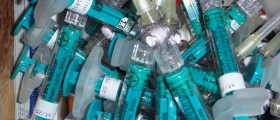
A Subject of Great Dispute
Proliferative injection therapy, or,shorter, prolotherapy is a controversial way of treating numerousligament, tendon and muscular pain problems. Namely, it involvesinserting a sugar-based solution in tendons and ligaments so as toreduce or even completely remove any pain present due to differentinjuries.
However, since this procedure tends tohave numerous side-effects because of its unorthodox way ofconducting, many people consider it inappropriate. Yet, many othershave managed to get pain relief and cure in prolotherapy, wheneverything they had tried beforehand was in vain.
Facts about Prolotherapy
As mentioned above, this therapyinvolves injecting the patient's injured ligaments and tendons with asugar solution called dextrose. This action triggers an increase inthe blood flow, resulting in more nutrients being supplied to thehurt body parts. Also, the dextrose causes the treated tissue to getinflamed, thereby engaging our body to fight harder against theproblem and, hopefully, regenerate the problematic tissue, resultingin pain relief and the patient's recovery from the troublesomecondition. Still, this procedure is not a standard one, and dextrosein our body may lead to numerous complications, and unwantedside-effects, making this procedure a risky one.
Possible Side-effects of Prolotherapy
Since this therapy involves injectionsgiven directly into the troublesome tendons or ligaments, there mightbe chances of nerve damage occurring. Namely, if the doctor is anunskilled one, or due to numerous other factors, during the therapy,this problem can take place. Then, the patient is bound to experiencenumbness and tingling sensations around the spot of injection.Fortunately, this side-effect is bound to disappear after severalhours.
Next, there is pain, being aninevitable part of this therapy. As soon as the dextrose reachesone's tendons or ligaments, the pain starts, accompanied with musclestiffness. Inflammations and bruising are also quite common.Sometimes, even though rarely, infections may take place. Then, thetroubled patient is prescribed specific antibiotic medications.
Alternatively, since, as mentionedabove, this procedure speeds up one's blood flow, blood vessels mayburst. This is bound to cause blood loss, dizziness and bruising.Also, when treating the spinal area with this procedure, there mightbe a chance of spinal fluid leakage, due to damage caused to thespinal canal. Finally, the rarest and least possible side-effectcould involve lung damage. During the procedure, one or both of ourlungs may get punctured possibly causing us life-threateningproblems.

















Your thoughts on this
Loading...